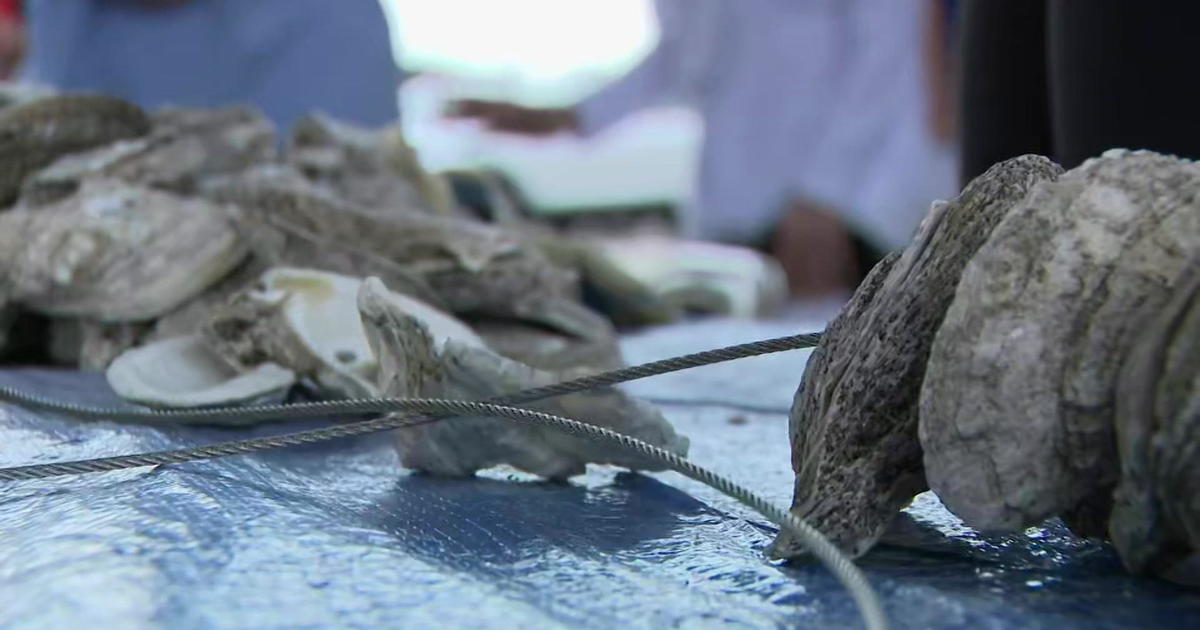Scientists sample 156 Florida oysters, find dangerous "forever chemicals" in each
MIAMI – Florida International University scientists recently conducted a study where they sampled 156 oysters from Biscayne Bay, Marco Island to Tampa Bay and found dangerous contaminants in each one.
The experts also said they were only aware of oysters from Tampa Bay being consumed by people and they said there was a "low risk of being exposed to contaminants when you consume oysters from Tampa Bay." That said, they are still concerned.
The "forever chemicals" detected were perfluoroalkyl and polyfluoroalkyl (PFAS) and phthalate esters (PAEs).
"These contaminants pose serious health risks to people and wildlife, and the oysters prove they are in the water and have crept into the food chain," they said.
The findings of their research were recently published in Science of the Total Environment.
"I wanted to look into what we're eating and if it might be contaminating us," said Leila Lemos, the study's lead author and an FIU distinguished postdoctoral scholar.
"These findings are definitely a red flag, especially for areas like Biscayne Bay."
They also said that they are not aware of people consuming oysters from Biscayne Bay.
Researchers said that as filter-feeders, oysters are among the best sentinels and can reveal a lot about the overall health of an ecosystem including levels of contamination.
"Biscayne Bay oysters had the highest concentrations of contaminants compared to the other study sites," Lemos told CBS4's Peter D'Oench. "We relate that to it being a more developed area with a higher density and population and more industrial checmicals. Biscayne Bay is really exposed to these type of contaminants we all us. These animals are filter feeding what water we use."
Lemos said, "this was somewhat surprising since they were among the smallest oysters sampled. The more time an oyster has to grow, the more time it also has to accumulate toxic chemicals."
"This means Biscayne Bay could be so contaminated, the oysters are bombarded with such high concentrations they accumulate contaminants more quickly," Lemos said.
Lemos points out current assessments only include four PFAS and four PAEs compounds — and don't look at the majority of compounds.
The research did not look at the risks of consuming other marine life that may live in the same waters as the oysters with high contamination.
"It's important to also remember that there's so many other exposure paths for both PFAS and PAEs compounds, like drinking water," Lemos said.
A previous FIU study, led by FIU chemistry Assistant Professor Natalia Quinete, found around 30 different PFAS in Miami, Broward and Palm Beach tap water, as well as in Biscayne Bay and nearby tributary canals.
"PAEs are widely used in consumer products, including pharmaceuticals, cosmetics, personal care products, food packing, detergents, children's toys and more."
"Exposure can happen from ingestion, inhalation, and through contact with dirt or soil, and studies have found association between PAE exposure and diabetes, obesity, allergies and asthma, as well as impacts to reproductive health, immune function and more."
"PFAS include thousands of man-made chemicals, primarily used in industrial and consumer products. They are found in everything from fast food packaging, non-stick cookware, waterproof makeup, clothing, adhesives, firefighting foams and more."
Quinete told D'Oench "The oysters used for consumption are from Tampa Bay. We are not aware of people eating oysters from Biscayne Bay. These oysters from Biscayne Bay are really small so the likelihood of them being served in restaurants is very small."
Lemos said "We did a hazard health risk and our assessment that there was a low risk of being exposed to contaminants consumed in Tampa Bay. The first thing though that people should do is always ask where their food is coming from."
Scientists say PFAS accumulate over time in the water, air, soil — and have even been found in human blood.
"These chemicals are known to impact reproduction and human development, immune system functioning, interfere with the effectiveness of vaccines, as well as cause liver and kidney damage."
In June 2022, the Environmental Protect Agency (EPA) warned PFAS are more dangerous than previously thought, even at undetectable levels.




